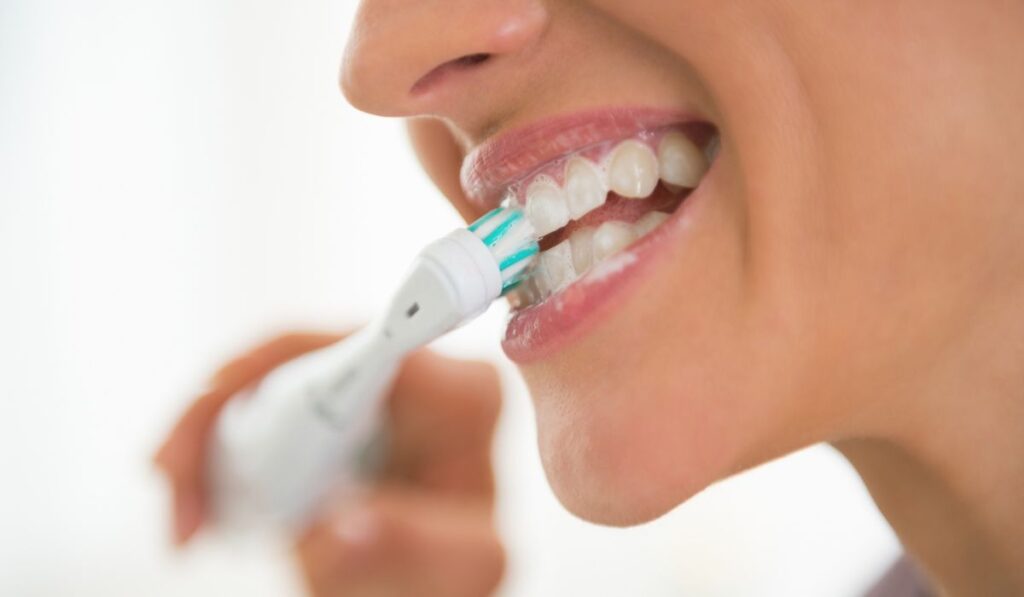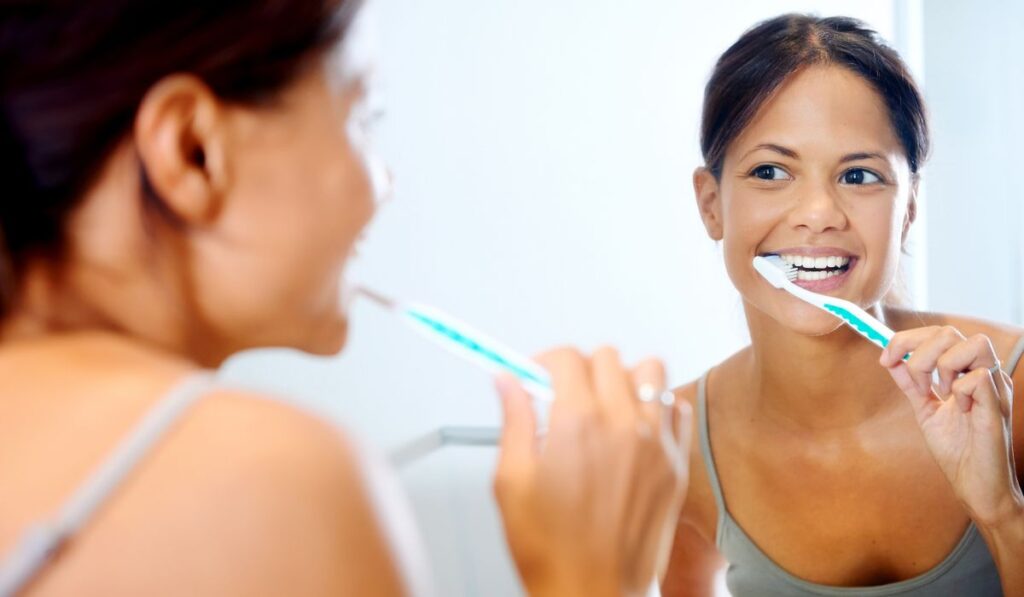In 1873, the first commercially produced toothpaste hit the market. Today, you can find over 1,400 types of toothpaste on the market. But even as the options proliferate, there’s an important question to consider: Is toothpaste actually necessary?
You don’t absolutely need toothpaste to clean your teeth; the removal of dental plaque can be done with just a toothbrush and floss. However, toothpaste often contains ingredients like fluoride that help the teeth resist decay and make the teeth harder through remineralization.
So if toothpaste isn’t essential, why is it so commonly used? Let’s take a look at some of the reasons why, as well as which toothpaste options are most effective.
Does Toothpaste Really Clean Your Teeth?

To help clean your teeth, toothpaste brands use a variety of ingredients. Among the ingredients that help with the cleaning process are abrasives. A mild abrasive like calcium carbonate or silica is added.
These abrasives remove stains and clean the teeth without causing damage. Some abrasives are too rough, such as salt, and they should be avoided.
Also, for effective cleaning, toothpaste contains fluoride — usually sodium fluoride, monofluorophosphate, or stannous fluoride. Fluoride helps the teeth resist decay and can also make them harder thanks to a process called remineralization.
In addition, toothpaste brands use surfactants, which are mild cleansers. These cleansers help toothpaste foam and spread over the teeth. The most common cleanser is sodium lauryl sulfate, which is found in most commercial brands.
If toothpaste didn’t contain surfactants, it would dry up and be cakey on the teeth. This is often what happens when you use baking soda alone to brush your teeth.
Toothpaste also contains other ingredients that contribute to overall oral health. One of those ingredients is an antibacterial agent, often triclosan. It cleans out all the bacteria and prevents gingivitis, a condition that leads to gum disease (periodontitis).
So, using toothpaste that doesn’t contain the right ingredients could mean you’re missing out on some of the key benefits of brushing with a good toothpaste.
Which Types of Toothpaste Are the Most Effective?
Fluoride is a crucial ingredient that is contained in most toothpaste brands. If the toothpaste contains fluoride, like Colgate Cavity Protection (on Amazon), it can offer more benefits than just cleaning your teeth. Fluoride toothpaste works perfectly to fight cavities and plaque.
Also, good toothpastes leave you with a clean enamel, thanks to the abrasives that polish your teeth.
When shopping for toothpaste, it’s important to find a brand that is ADA-approved, such as PRO-SYS (on Amazon). With the ADA seal of approval, it means the toothpaste was put through clinical trials and proved to be safe and effective.
When bacteria in the mouth break down carbs and sugar, it produces acids, which eat away at minerals in the tooth enamel. Losing these minerals is a process known as demineralization. Weakened enamel makes your teeth vulnerable to bacteria that lead to cavities. By using fluoride toothpaste, you can remineralize your enamel, effectively preventing cavities.
However, while fluoride is naturally occurring, it can cause side effects if you consume it in large doses. When brushing with fluoride toothpaste, there’s no risk of poisoning from accidental ingestion. Ensure you rinse your mouth with clean water, and you have nothing to worry about.
So, when you’re looking for an effective toothpaste, check if these important ingredients are included.
Can I Brush With Water Only?
The short answer is yes. It’s fine to clean your teeth without using toothpaste. The toothbrush alone is an effective instrument you can use to clean your teeth. Toothpaste is an added touch for excellent results, however.
With just a toothbrush and water, you can remove plaque and food particles. This means you could always brush without toothpaste and not worry about issues like tooth decay.
However, this is not the whole picture, as depending on the foods you eat, you might need toothpaste to enhance the cleaning process.
Using toothpaste, you can benefit from the different bacteria-busting elements. These include compounds that offer a way to double down on the plaque-fighting benefits of the toothbrush. Also, the ingredients in toothpaste help with teeth whitening and will freshen your breath.
Furthermore, toothpaste works as a lubricant for your teeth. While water and a toothbrush might be enough, the added lubrication ensures you don’t sustain scratch injuries on your gums from the bristles.
If you’re still not convinced about brushing with toothpaste, you should consider getting plaque-disclosing tablets (on Amazon). These contain dye that highlights plaque, thereby revealing the areas you should pay more attention to.
Is Fluoride-Free Toothpaste Effective?
There has been growing awareness of the kinds of ingredients used in toothpaste and their impact on health. One of the key ingredients that have received a lot of scrutiny is fluoride, which we described above.
Fluoride is considered a poisonous substance if ingested in large amounts. However, the amount added to toothpaste is not enough to cause harm.
The argument among those who reject toothpaste with fluoride is that when it’s used over a long time, the small amounts can pile up and cause health complications. Besides, there’s concern about the impact of fluoride on the environment, especially marine life.
Fluoride-free toothpaste is effective because it still contains abrasives and other ingredients that do the job of cleaning. While the toothpaste will leave your teeth sparkling clean, the lack of fluoride could mean you miss out on benefits like remineralization.
Fluoride reduces the demineralization process, which usually precedes tooth decay. If you have demineralization but it’s still in the early stages, fluoride can help with remineralization.
Besides, fluoride disrupts dental plaque, which is a major causative factor for gum disease and tooth decay. Indeed, you can use a toothpaste without fluoride, such as Dr. Sheffield’s (on Amazon), but keep in mind you would reap more benefits if you went for one with all the key ingredients.
How to Get the Most Out of Your Toothpaste

To get the best results using toothpaste, you need to understand the basics, including how often you should brush. Generally, you should brush twice a day and do it for at least two minutes.
You may think you’ve been brushing for long enough, but most people actually spend less than one minute brushing their teeth. Also, it’s better to brush twice a day instead of doing it five times in haste.
Some healthcare providers advise brushing while at work, school, or any other place where it’s possible. Even when traveling, packing toothpaste and a toothbrush will come in handy. Also, your toothbrush should be replaced every two or three months.
Conclusion
One of the best ways to clean your teeth is by using toothpaste. However, some people are hesitant to use certain ingredients contained in most toothpaste brands.
Brushing without toothpaste is an option, since the brush can remove plaque and food deposits effectively. However, you’ll miss out on some incredible benefits of using toothpaste, including remineralization thanks to fluoride.
For the best results, spend at least two minutes brushing, and only use toothpaste that has an ADA seal of approval to avoid ingredients that can cause health complications.


